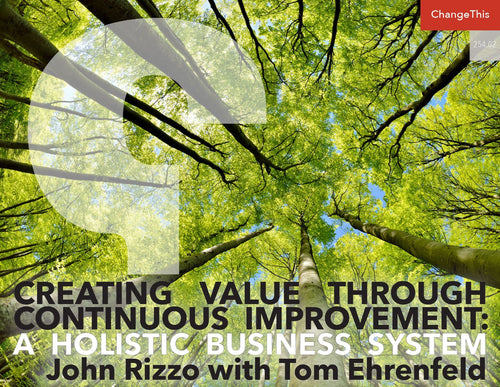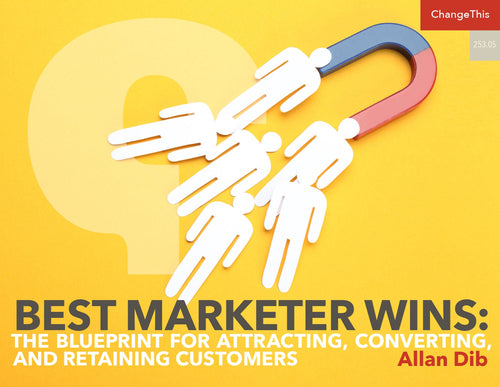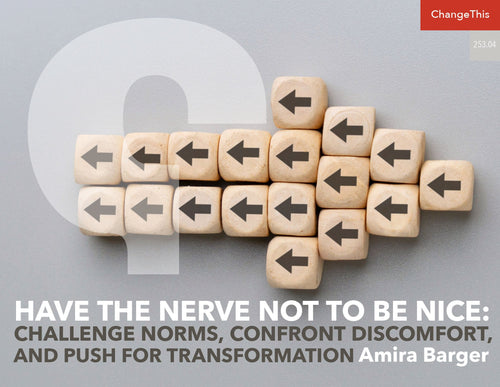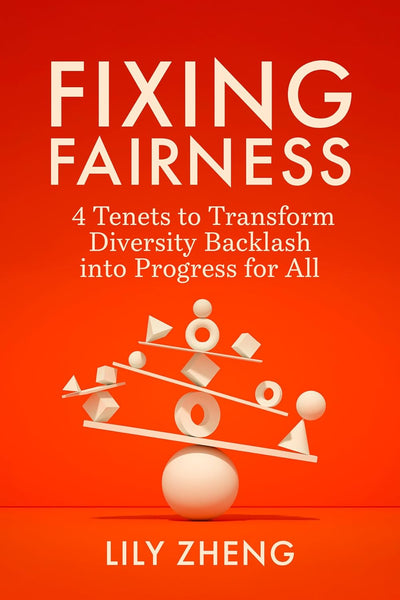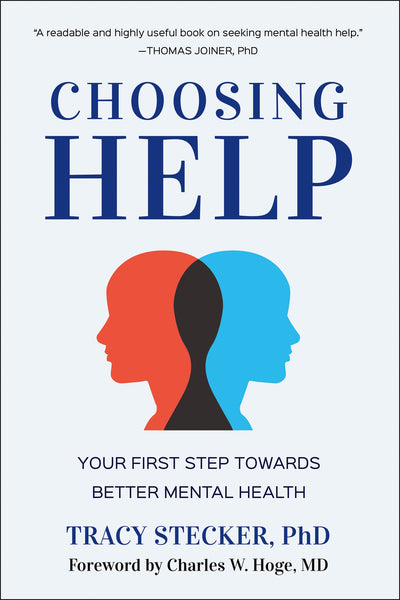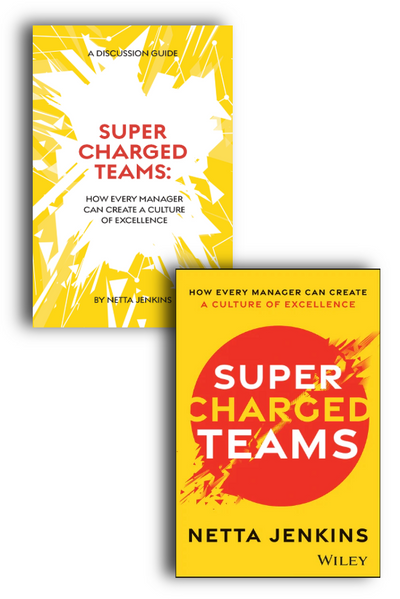Culture and Courage: How to Shake Things Up While Adhering to Core Principles
I am fortunate to have lived my life at the intersection of capability and opportunity.
This is an adaptation of the Roman philosopher Seneca’s definition of luck: “a matter of preparation meeting opportunity.”
But I wasn’t lucky.
I started life as the child of Haitian immigrants and initially lived in a Bronx tenement. Through academic merit, I was able to attend Cornell University on scholarship. I was fortunate to have some excellent jobs and bosses early in my career, and I also had some that were far from excellent. I became president of Nintendo of America and succeeded in that role not through luck but by always making the most of every opportunity.
I was driven to learn by engaging in new experiences and by having an insatiable curiosity. I asked countless questions; I wanted to know stuff, and not just stuff in a narrow field of interest. It wasn’t just knowledge for knowledge’s sake. Knowledge helped me come up with innovative solutions to problems that initially appeared unsolvable. Opportunity came when I saw the potential to achieve in ways that others didn’t immediately see. This led me to often choose untraditional paths that ran counter to expectations.
To do that, though, one of the first things I needed to know was the culture of the company I was entering. To explain the importance of this understanding, let me first take you back to where it all started for me, at Procter & Gamble.
BRAND-NEW MANAGER
Every organization has a culture. Culture defines how people act, even when no one is looking. Culture defines how people get ahead. Culture is the air around the place that you breathe every day.
To me, the culture at Procter & Gamble consisted of the one-page memo, the “What Counts” Factors, and “up or out,” all of which I’m about to discuss.
THE VALUE OF A PERFECT MEMO
Everything at P&G moved forward based on ideas or initiatives distilled on one piece of paper. From your first day, you were challenged to write clearly and persuasively. Typically, you were working on two or three memos at a time, with a goal of publishing at least one per week to the next level of management. You would share these memos with your boss, and they would come back with more handwritten critique than what was initially typewritten on the page.
You learned to start with a clear articulation of the purpose of the memo. Was this a recommendation to launch a new advertisement? Was it a summary of research? Was it a proposal for a reduction in pricing? You needed to be clear at the outset.
Another element of the one-page memo was to frame thinking into threes. Three reasons why your idea made sense. Three key findings from a research report. Always three. I remember asking why, and the answer was put simply: one or two is not convincing enough; four or more is overkill. Three was judged to be the perfect number. I still tend to talk in threes.
An effective one-page memo anticipated concerns about the proposal and rebutted these concerns by stating the risks in pursuing the initiative, and how those risks could be mitigated.
The final element in the perfect one-page memo was clarity on the next steps. This required discipline to fully consider how the initiative could be implemented. For example, if the proposal was to produce a new advertisement, you needed to have already worked to understand the production company to be used and their availability, how many days of filming would be required, how many days to edit, and finally when all the internal approvals would be in hand to have the finished ad ready to run. This drove an attention to detail and an anticipation of what issues would affect the cost and the timetable.
For a twenty-two-year-old fresh out of Cornell, there were two big outcomes from perfecting the one-page memo. The first was strong business writing skills. It would be a point of pride to create a document, deliver it to my boss, and have it sent on to the next level of management without any edits or comments. Admittedly, it would take me months to get to this point. But it felt great when it happened.
The second and bigger outcome was the clarity of thinking that results from laboring over the perfect one-page memo. You learn to assess the big picture and what you are trying to accomplish. You learn to be persuasive. You learn to look for data or external examples to support your proposals. You anticipate questions and have answers ready. You create a detailed action plan to implement your proposal.
FIVE VALUED BEHAVIORS
P&G’s “What Counts” Factors defined the behaviors that were valued within the company. The company constantly labors over these factors to make them clear because they are openly shared with every new brand-management employee. They evolve over time, as the business evolves. During my time at the company, there were five “What Counts” Factors:
- Superb thinking skills. The focus was on strategy, analytics, and creativity.
- Personal initiative. Colloquially, this translated to making things happen.
- Consumer-led innovation. You needed to focus on what consumers wanted and figure out how to give it to them while delivering a profit.
- Creating business-building advertising. You needed to lead outside entities, such as the advertising agency or production company, in a creative and collaborative process.
- Developing people and teams. This was critical because at the time, P&G promoted only from within. As a people manager, you needed to create a pipeline of great people in your footsteps so that you could be promoted.
This final factor was dual edged. As a people manager, you needed to train and develop your subordinates to the best of their abilities. But if they (or you) were unable to get to the next level within the company, it was made clear that you needed to leave. This was the “up or out” element of P&G. Everyone felt this pressure. In fact, within months of joining the company, you would start to get calls from executive recruiters who built successful careers helping P&Gers transition out of the company when it was their time to go.
The message to get out could be overt. During my career, I told a few people they did not have the skills or capacity to get to the next level and that their best next step was to look outside the company. Or it could be more subtle, as others with similar tenure were promoted and you were not. This situation was difficult to manage, as sometimes the company really wanted you to stay but your own impatience, and the constant calls from recruiters, were driving you to look at opportunities with other companies.
If you pick up my new book, Disrupting the Game, you’ll learn how these dynamics ended up directing my own time in the company and my career beyond it.
THE SO WHAT | Culture and fit can often be overlooked when evaluating a business opportunity. Understand the foundational elements that drive how employees approach situations and how they behave toward one another.
As a junior employee, ask the tough question: “How will I fit into this culture?” In my experience, a bad hire wasn’t because the individual didn’t have the necessary skills; it was a lack of behavioral fit.
As a senior executive, your challenge is even greater: What parts of the existing culture are positive? Which parts are not and need to be changed? No culture is perfect. And if you don’t evolve with emerging business conditions, your company and its culture will be left behind. The best senior leaders define the culture in their organization thoughtfully.
PRESIDENT OF NOA
From the beginning of my professional journey at P&G to where it ended up, at Nintendo of America (NOA), understanding the existing culture was always a priority. But when I became president of NOA in 2006, understanding the culture wasn’t good enough. I knew I needed to change it. As president of NOA, I now had to apply the skills and strategies I had already been using in running the sales and marketing division across the entire company.
I needed to convince my new direct reports and previous peers that I understood their functional areas and would advocate for their initiatives. These included executives in charge of finance, technology, operations, product development, and business affairs.
I held reviews with each executive to dive deep into their business. I focused on meeting their people, especially at the vice president and director levels, as these would be the potential future leaders of the company. I needed to understand where we had bench strength, and where we did not, to make sure we were well positioned for the future. I also asked questions to challenge the existing priorities and to make sure I supported the key work being done.
Throughout these meetings across the company, I focused on common issues that needed immediate attention. First, Nintendo of America was highly siloed. Each division had its own set of priorities, but there was no sense of overall company priorities and no understanding of how everything fit together. This was a legacy issue. Global Nintendo and NOA were each centrally managed, and this led to a lack of internal communication at each organization and a lack of internal teamwork.
MICROCOSM OF WHAT WAS WRONG
A classic example of this siloed thinking was the launch of Game Boy Micro in the fall of 2005. At this point, we had already launched Nintendo DS, and our focus was on making this product a long-term success. The Game Boy Advance business was in a state of decline, and NOA was planning on closing out the line with a Black Friday promotion that would clear out all our remaining inventory. These plans were created in early 2005. Shortly thereafter, I first heard of Game Boy Micro. Members of our operations and product development teams had been aware of the Micro much earlier than I.
From my perspective, the concept of Game Boy Micro was a nonstarter. The hardware was exceptionally small. Not only were the control buttons difficult for any reasonably sized adult to manipulate, but also the screen was tiny. This ran counter to current consumer electronics trends of making screens larger. But development of this hardware had continued, and now we were forced to launch the system. “We should have talked about this long ago,” I told my peers in the company. “We should have all agreed that this product would be a distraction for us in our market and either not introduce it here or have it terminated as a project globally. By working together we could have had a different outcome.” My point was not to rebuke them. It was to identify that we were operating in silos and this made us ineffective in managing projects.
Game Boy Micro launched globally to lackluster results, selling fewer than a million units in its first month and fewer than two million units after four months at the end of 2005.
I used this as a teachable moment for NOA. The lesson: company leadership needed constant communication on our priorities. As president, my solution was to institute weekly meetings of the executive leadership team to review key priorities and our progress against them. Initially, there was some grumbling. “Do we really need to meet weekly?” was the common lament. No executive gets excited about the prospect of more meetings. But as soon as we started, everyone saw the benefit. The grumbling stopped, sharing of information accelerated, and we saw an immediate benefit in the pace of our initiatives. As we would begin a new fiscal year, we would align on the upcoming year’s priorities. This ensured agreement across the entire company. And I would share these priorities with Satoru Iwata—my superior and mentor in Japan—to shape his thinking on the overall Nintendo priorities for the upcoming year.
No culture is perfect. And if you don’t evolve with emerging business conditions, your company and its culture will be left behind. The best senior leaders define the culture in their organization thoughtfully.
THE SO WHAT | Leaders create alignment through frequent meetings, calls, and digital communication. In this age of remote work and dispersed teams, real engagement is an even higher priority.
When teams and individuals are in their own bubble, they can misalign on priorities. This is especially true if silos have developed in different functions and other groups. The only way to keep the organization moving forward without missteps is by sharing information continuously and making sure everyone is using the same playbook.
I applied this same approach across the entire company as president. With my executive leadership team and our human resources group, we created a matrix of NOA Competencies across five dimensions:
1. Thought—reflecting the individual mindset we wanted our employees to have, such as continuous innovation and global perspective
2. Results—demonstrating a bias for action and achievement of planned results
3. Self—addressing how the individual conducted him- or herself with trust and adaptability
4. People—addressing collaboration and valuing differences
5. Leadership—focusing on building effective teams and driving vision
We broadly communicated these competencies and tied them directly to our performance review process. We demystified the behaviors we wanted everyone to exhibit and how progression within the company would happen. Initially, this led to an increase in employee turnover, but culture surveys showed a dramatic increase in favorability for how employees felt about their future with the company.
HAVING THE COURAGE OF YOUR CONVICTIONS
One of the first key decisions in my new role as president of NOA would be launch planning for Wii. During the life span of Wii and Nintendo DS, there were many courageous decisions. For example, we decided to dramatically ramp up production for both systems in 2008 and 2009. Because of lead times, this decision had to be made a year in advance! Having the conviction to sell about twenty million units of each globally, two years in row, required deep business insight. And courage.
Another courageous decision was for NOA to provide Netflix capability in the Wii console. In 2009, as we were pushing this idea, Netflix was still early in its transition to a digital platform versus a disc-based DVD subscription business. Wii did not have DVD capability, so we were betting that a digital subscription effort would scale for Netflix. And this was essentially a North American initiative as Netflix was relatively small in Europe and almost nonexistent in Japan, so executives at Nintendo’s central office in Kyoto really didn’t understand the business opportunity.
But at this point, NOA had a reputation for not only courageous decision-making but also correct decision-making. With support from Kyoto, we announced that Netflix would come to the Wii console in January 2010. The inclusion of Netflix, plus the group game play of Wii Sports, positioned Wii to be the console of choice for the main living room television. By the holiday season that year, Wii was selling at the fastest pace in video game history. Leaders have to make tough decisions all the time. That’s because in well-run organizations, people are empowered and the easier decisions are made lower in the organization. It is the thorniest issue, with deep ramifications, that falls to leaders to decide.
Leaders don’t have a crystal ball. They don’t know in advance that the decision will work out. But they workshop the issue. Relying on the culture and competencies they have built at all levels of the business, they discuss it broadly and constantly to get alternative points of view. Then, finally, they make the decision and live with the consequences.
In well-run organizations, people are empowered and the easier decisions are made lower in the organization. It is the thorniest issue, with deep ramifications, that falls to leaders to decide.
THE NEXT GENERATION
Because of the decisions I made, and the work I and others around me put in to strengthen the culture, I was able to announce the following at a leadership team dinner in February 2019.
“Team,” I told the assembled group, “We have shared tremendous successes together. Nintendo Switch is breaking records. Software is selling at unheard-of levels. We are delivering strong profitability for global Nintendo, performing the best of any subsidiary on all of our key metrics. But even more importantly, our organization is strong. We have been able to promote from within and give employees more responsibility without having to hire from the outside at senior levels. This is why I have chosen this time to retire from the company.”
Great leaders exit a role knowing that their group will continue to perform well even when they are gone. It is the ultimate step in creating a lasting legacy. They have done all the mentoring and succession planning they can to set the group up for success.
The best way to honor a company culture is to leave it better than you found it. So I have two simple messages. First, learn from the people who matter most during the course of a career. Importantly, you can learn from them while you’re on the job and even later when they’re no longer physically present. Second, once a disrupter, always a disrupter. I titled my book Disrupting the Game because I couldn’t have developed the culture and the success we had without disrupting the past pieces of it that were holding us back.
Even though I’m no longer at Nintendo, I still intend to pursue opportunities to disrupt— it’s what gets my blood flowing and creates value for me, and I hope for others as well.
But, disrupt with integrity. In every situation, whether on a board or in a leadership position, the challenge is to shake things up while adhering to core principles. If you can’t do both, then you have to leave and live to disrupt another day.
Adapted from Disrupting the Game.
Copyright © 2022 by Reggie Fils-Aimé.
All rights reserved.
ABOUT THE AUTHOR
Reggie Fils- Aimé is an award-winning innovator and disrupter who has helped bring the Nintendo DS, the Wii, the Nintendo 3DS, Wii U and the Nintendo Switch to the global marketplace. He joined Nintendo of America Inc. in December 2003 as Executive Vice President of Sales & Marketing. In May 2006, he was promoted to President and Chief Operating Officer. He was inducted into the International Videogame Hall of Fame in October 2019 and received the annual Legend Award from the New York Video Game Critics Circle in January 2020.
Prior to joining Nintendo, Reggie was Senior Vice President of Marketing at VH1. During his tenure at VH1, he engineered the channel's redirection to young viewers that resulted in an overall 30 percent rating growth, and he created and executed the marketing plans for The Concert for New York City, which raised more than $35 million for disaster relief in the wake of the Sept 11, 2001 attacks.
Since retiring, he has focused his energy on developing the next generation of business leaders. In August 2019, he was named Cornell University's Dyson Undergraduate Business School Leader in Residence. He also founded Brentwood Growth Partners to help emerging companies scale and enable leaders to create world-class cultures.



